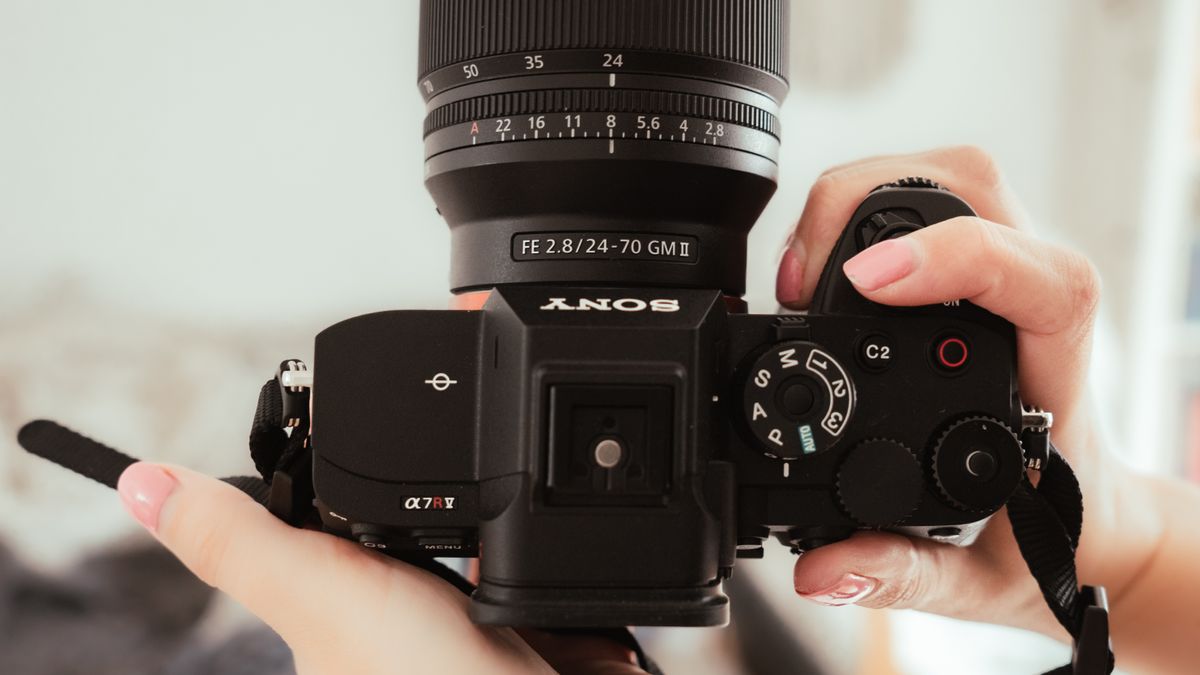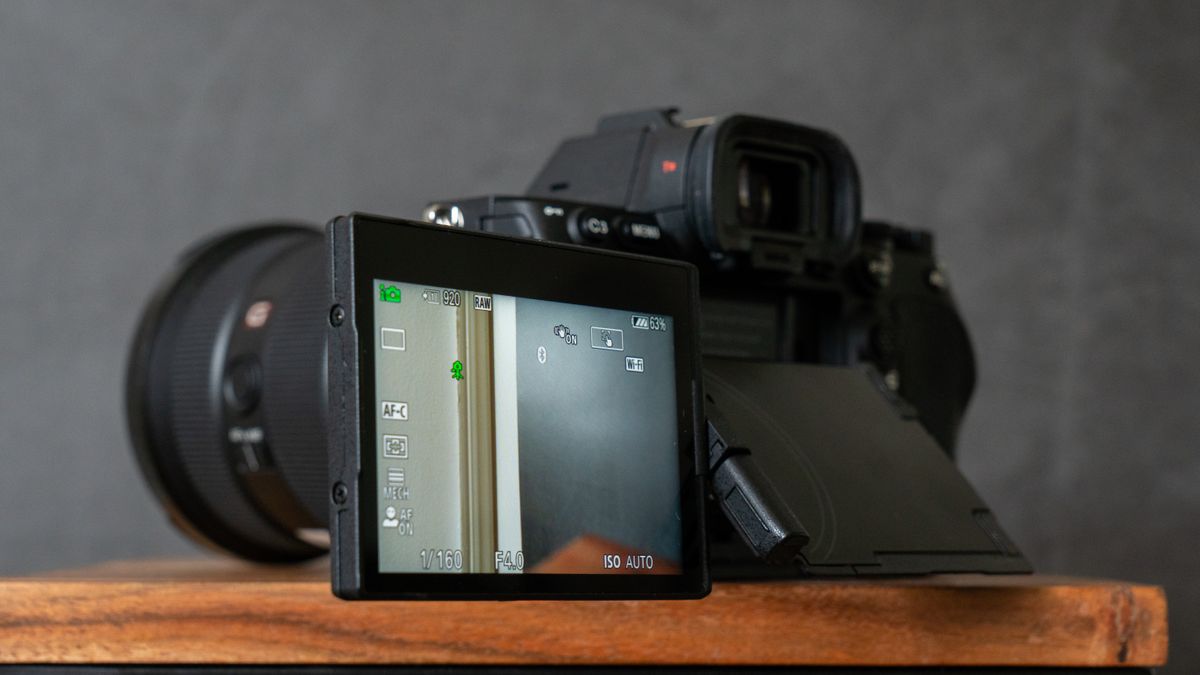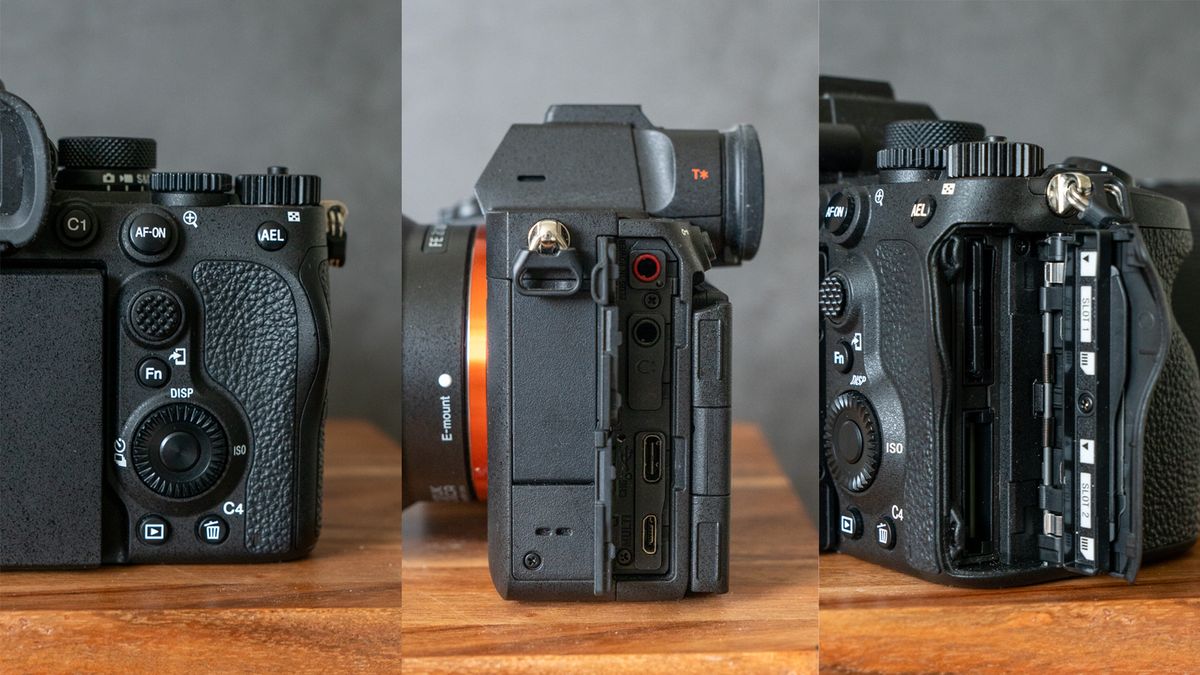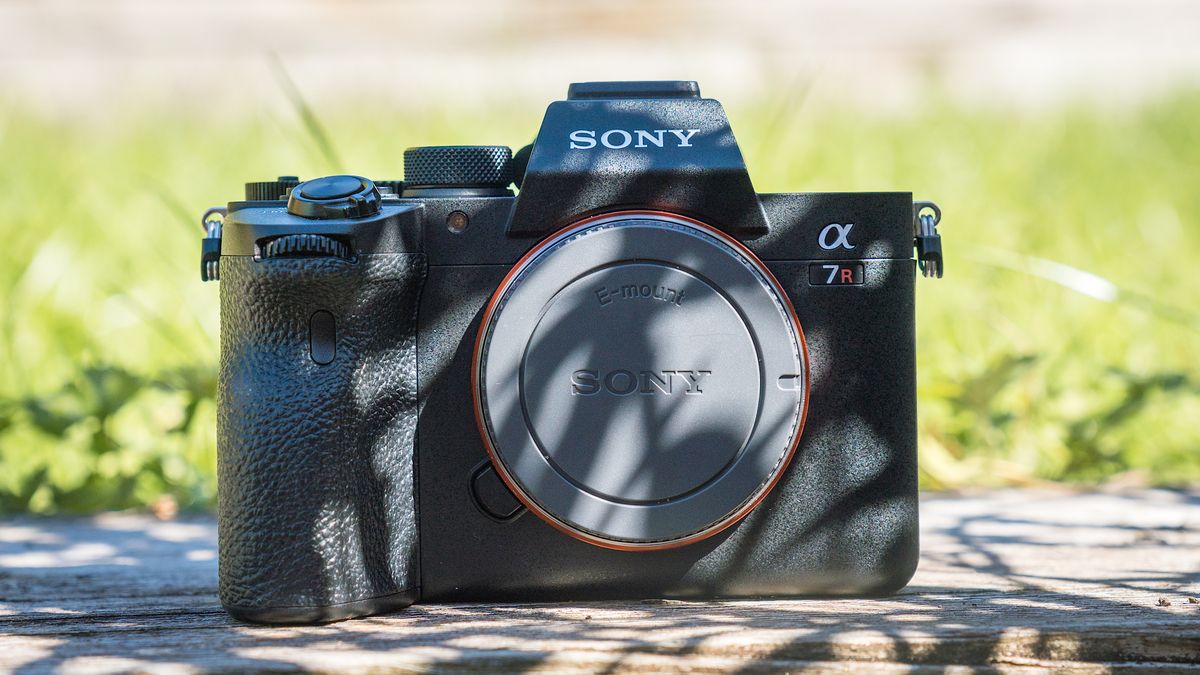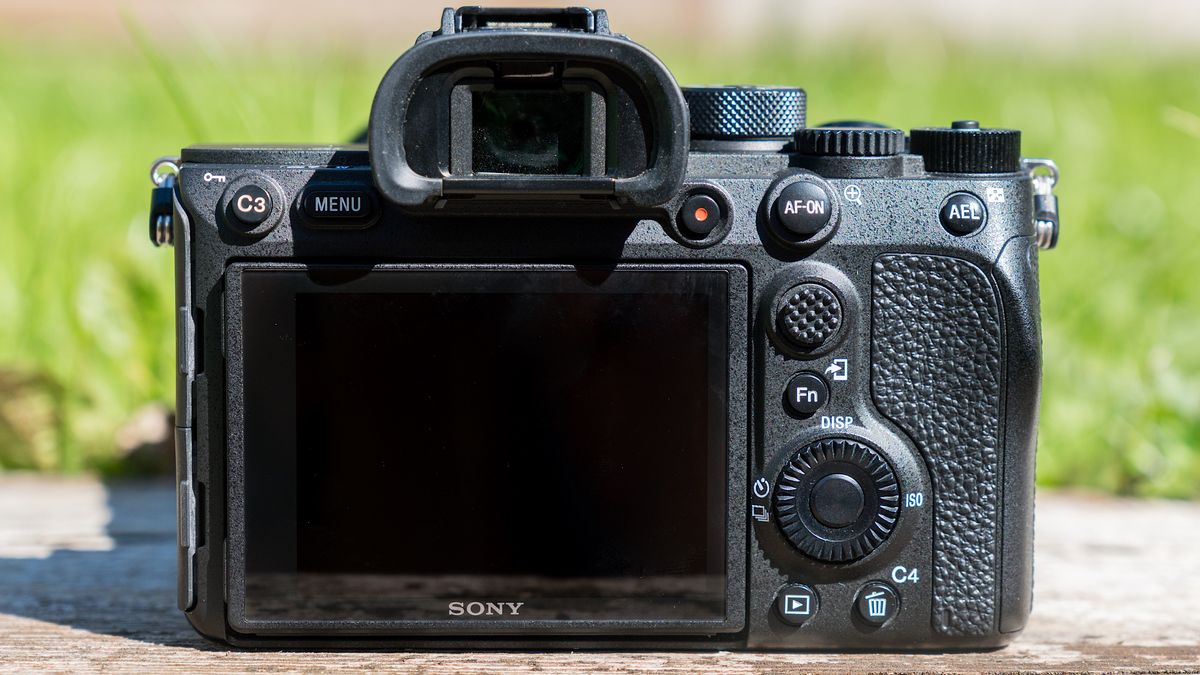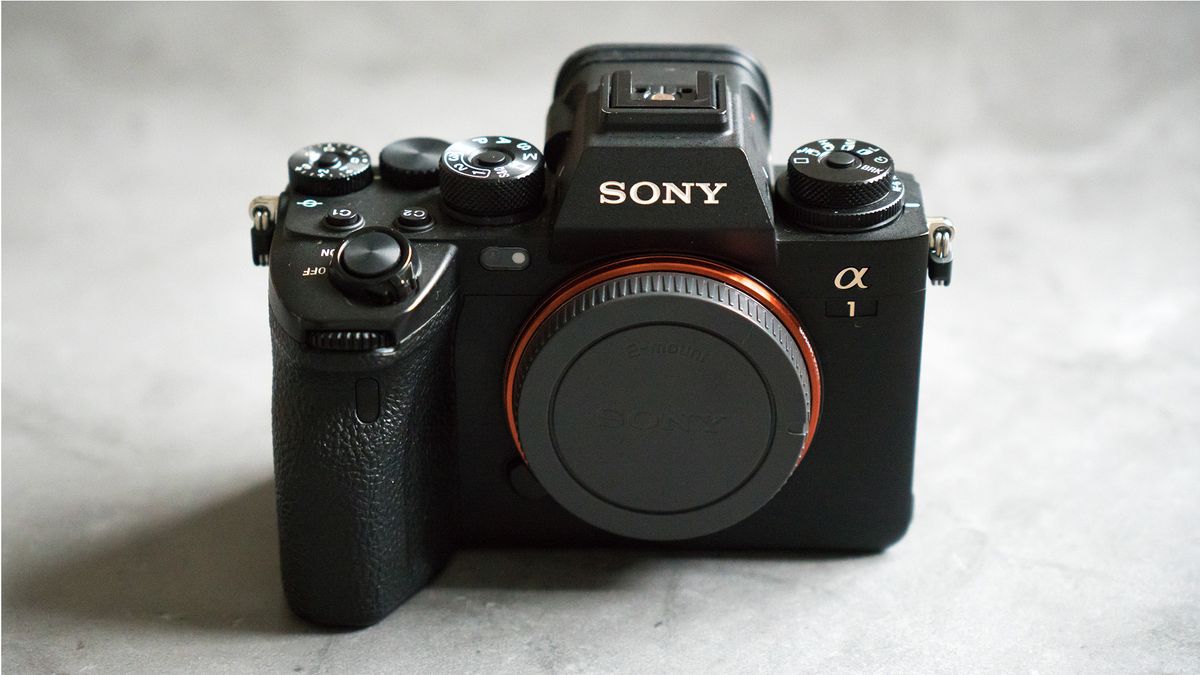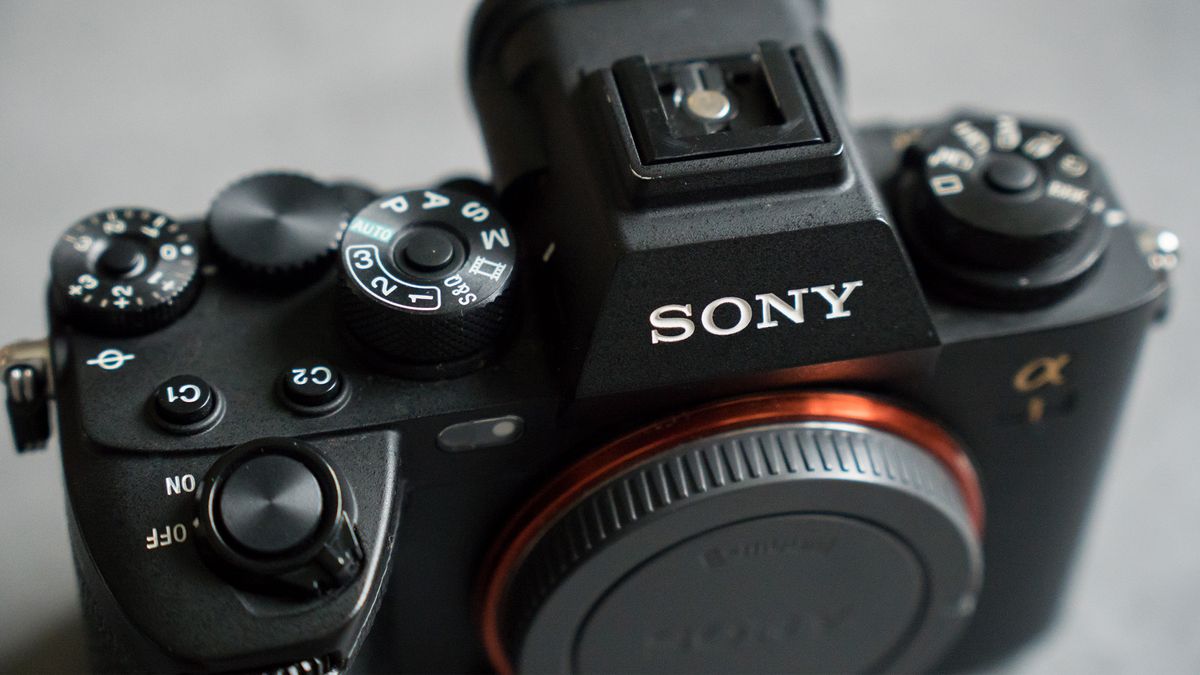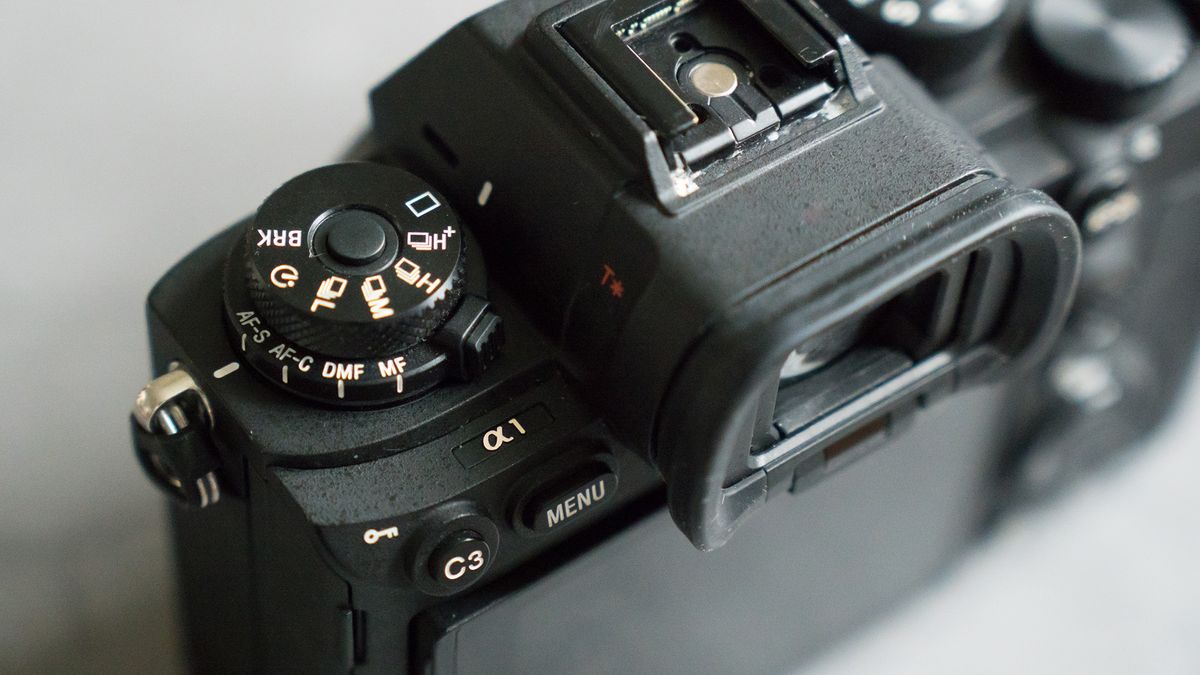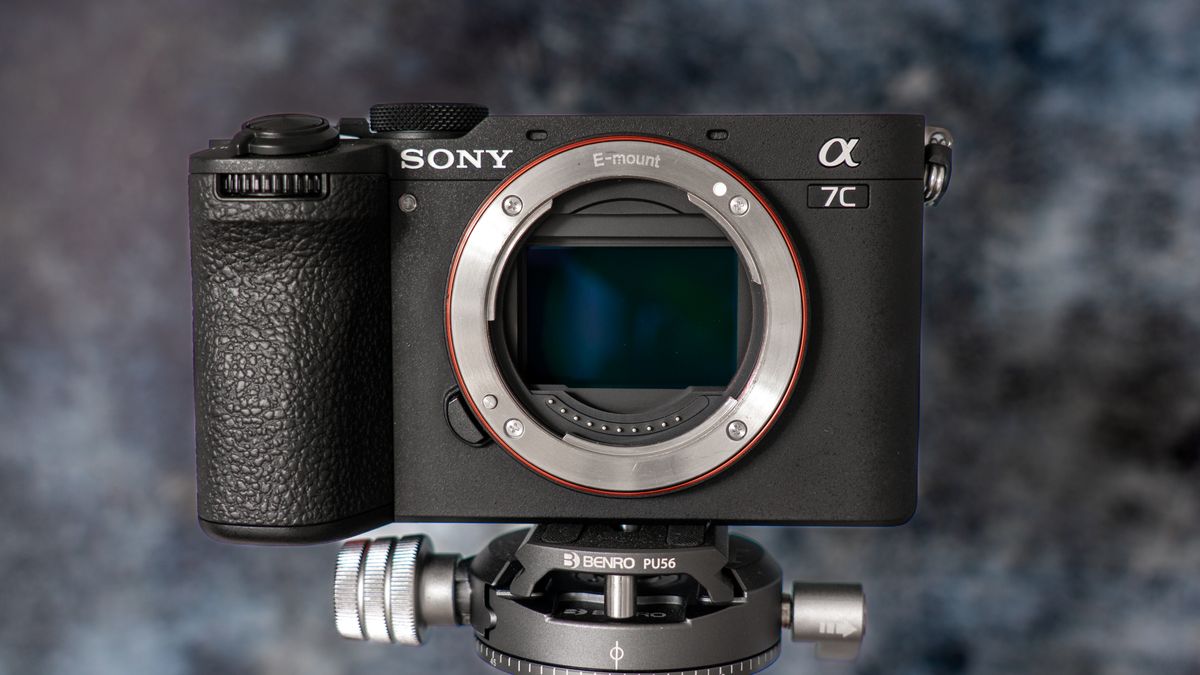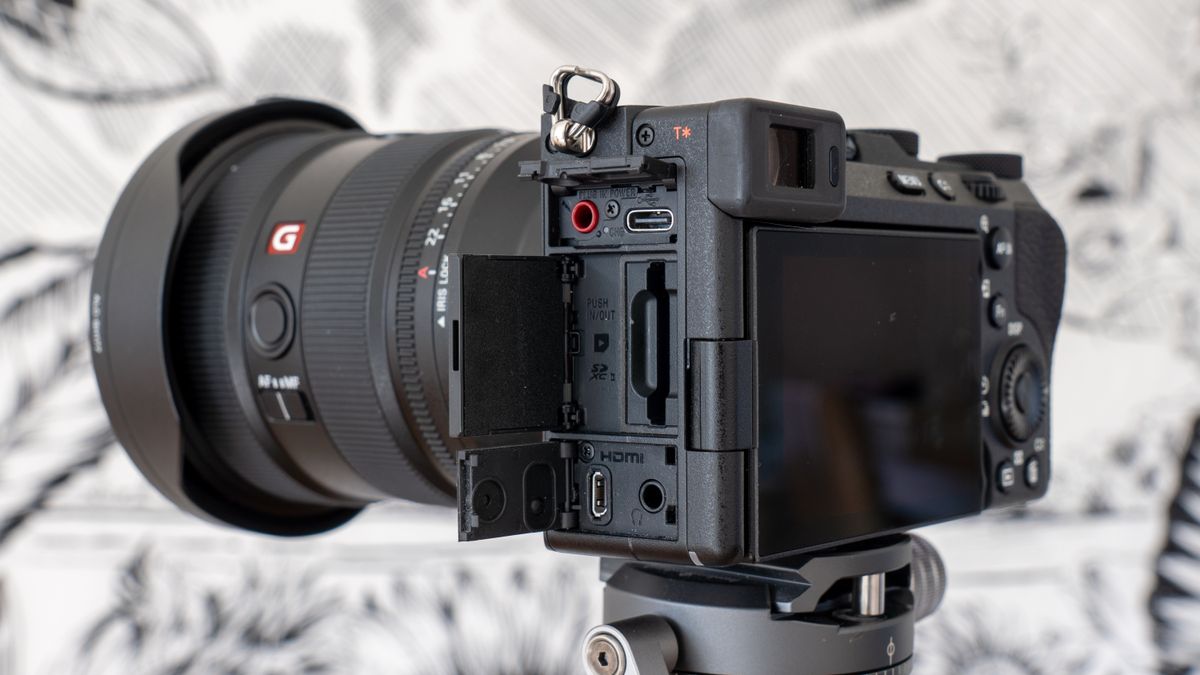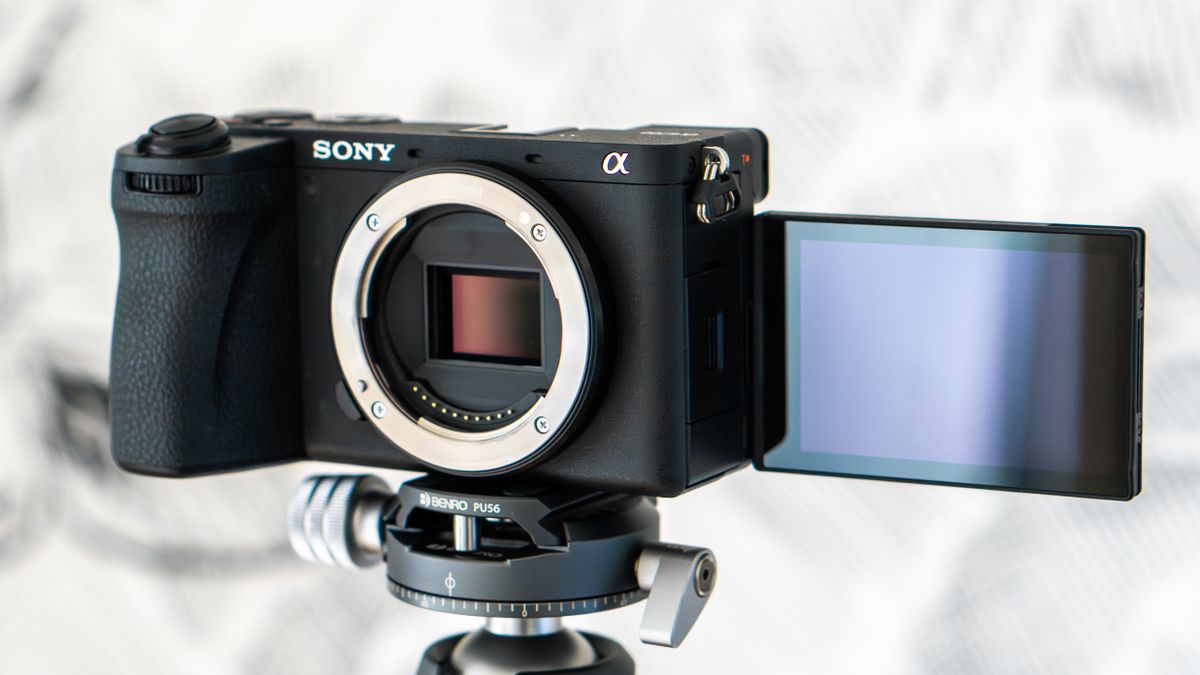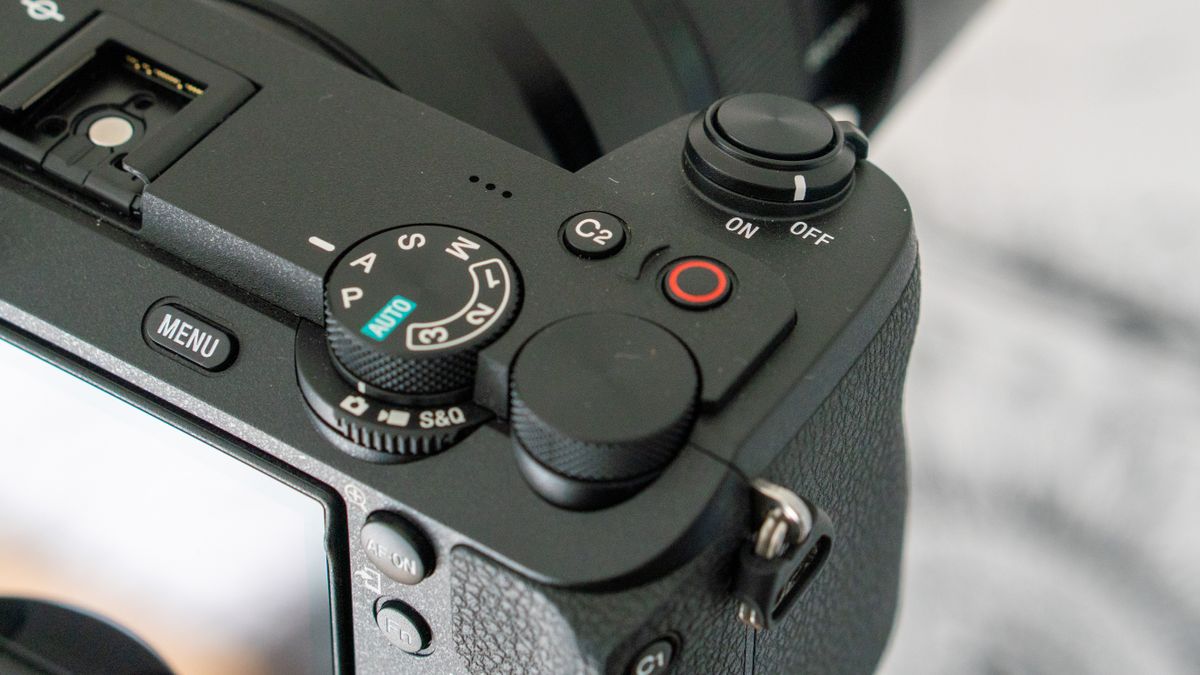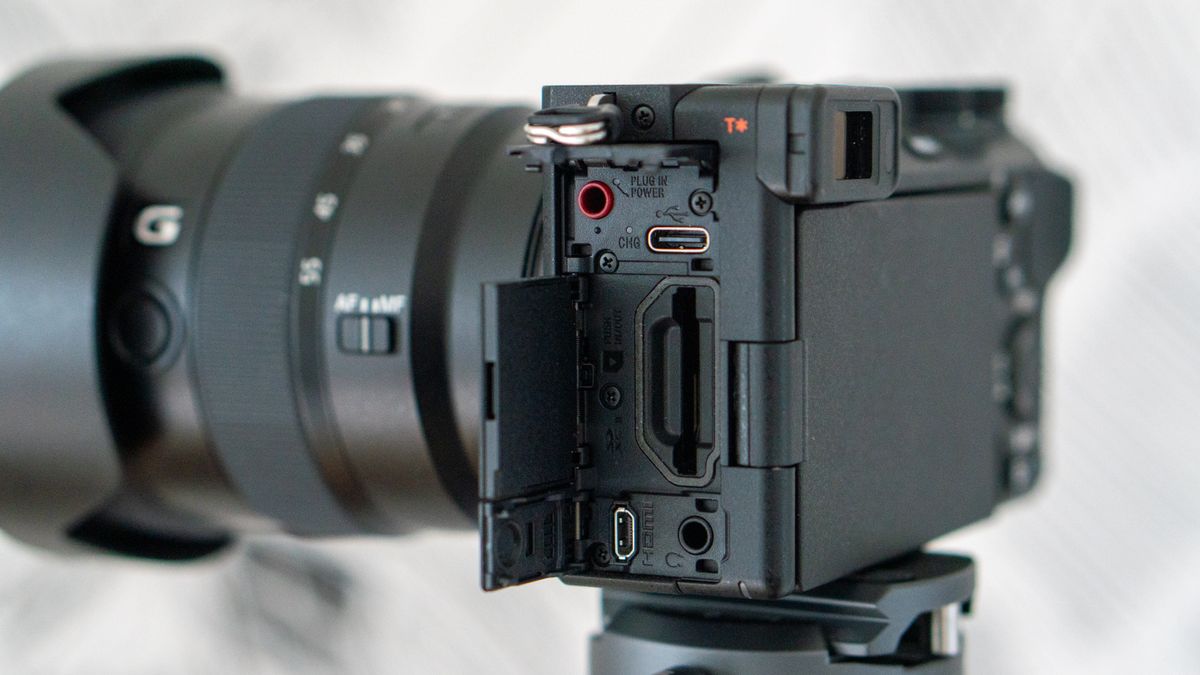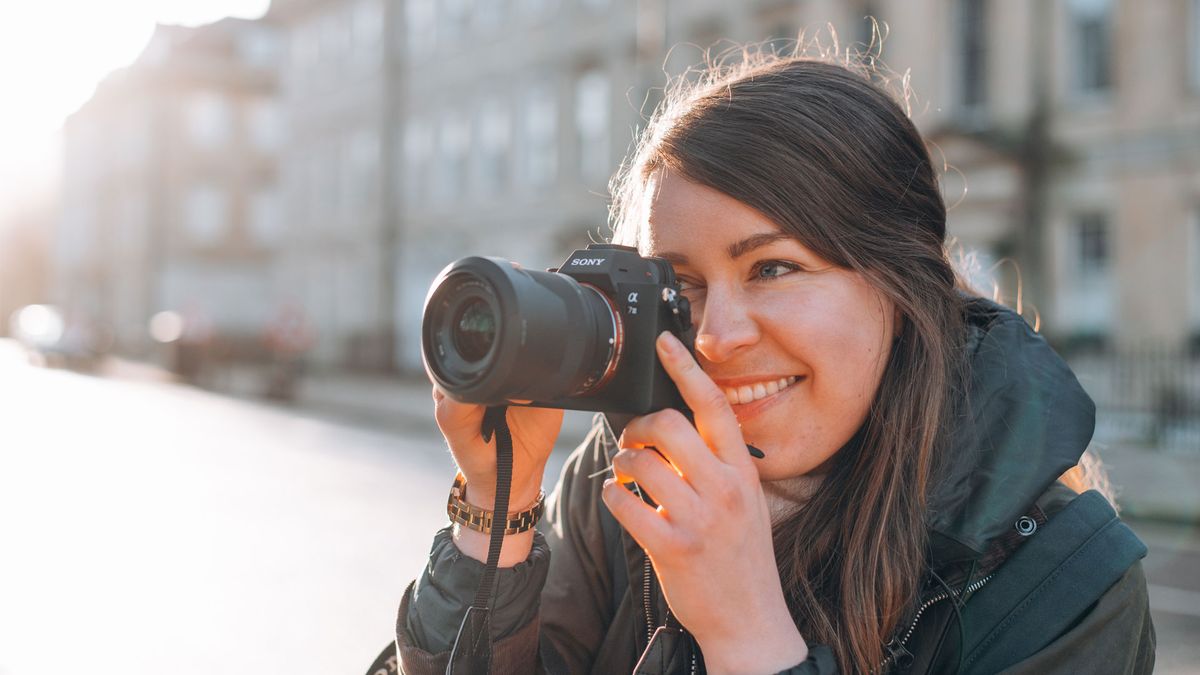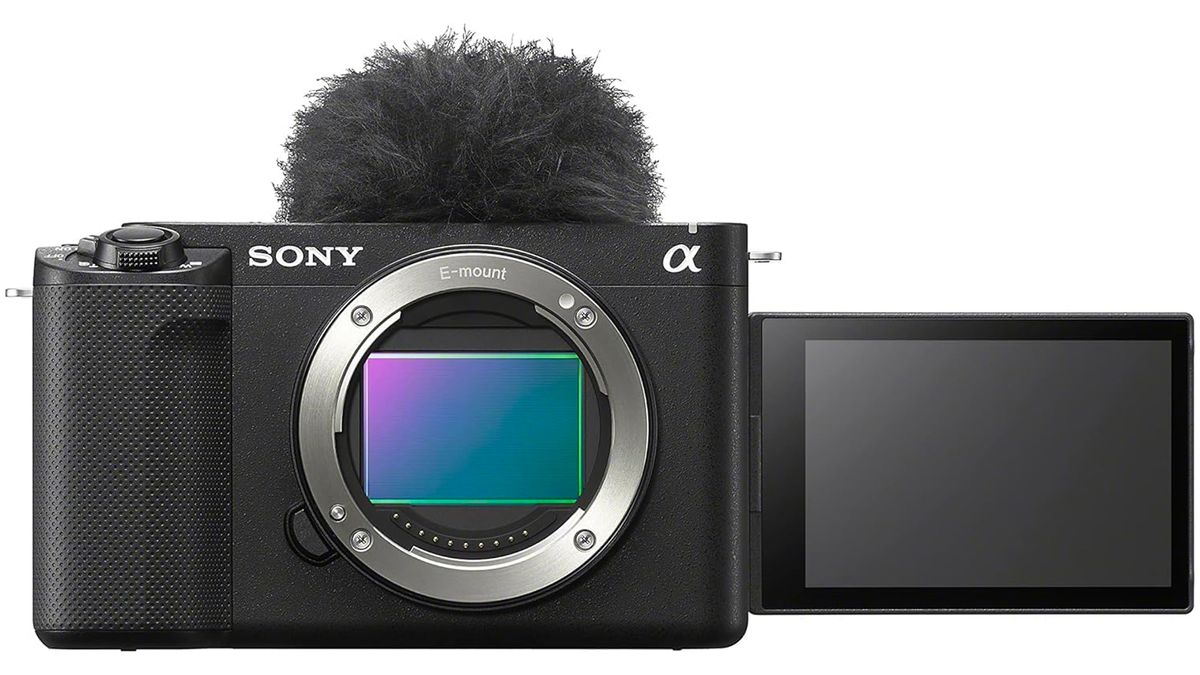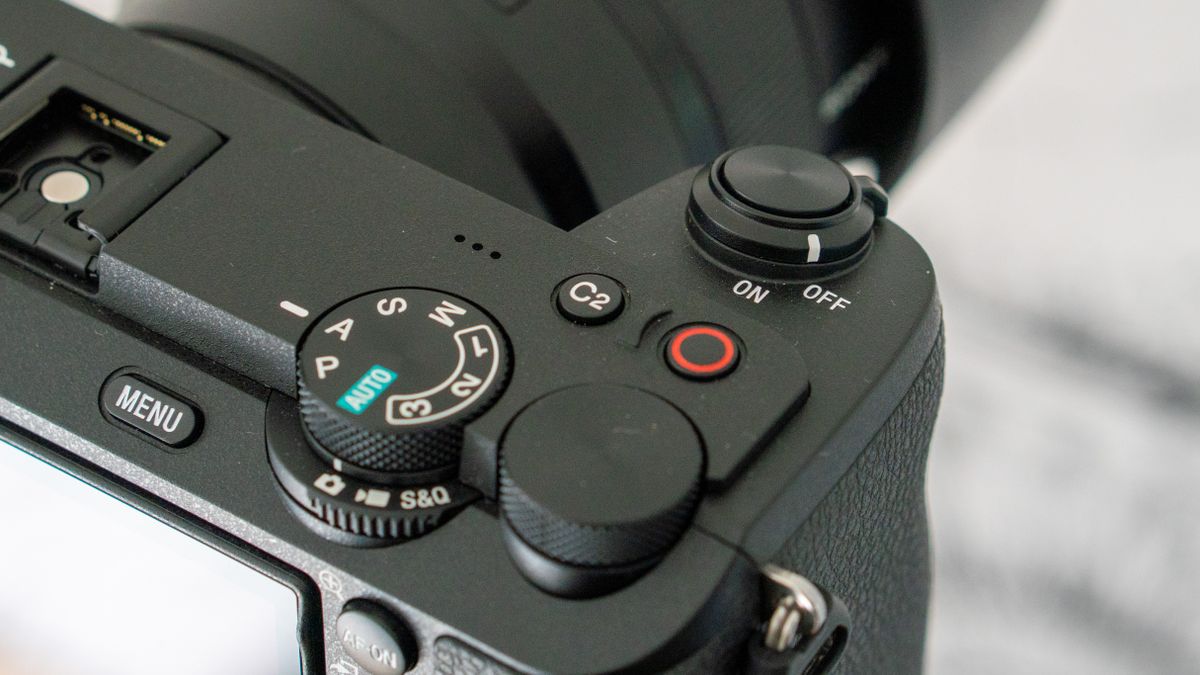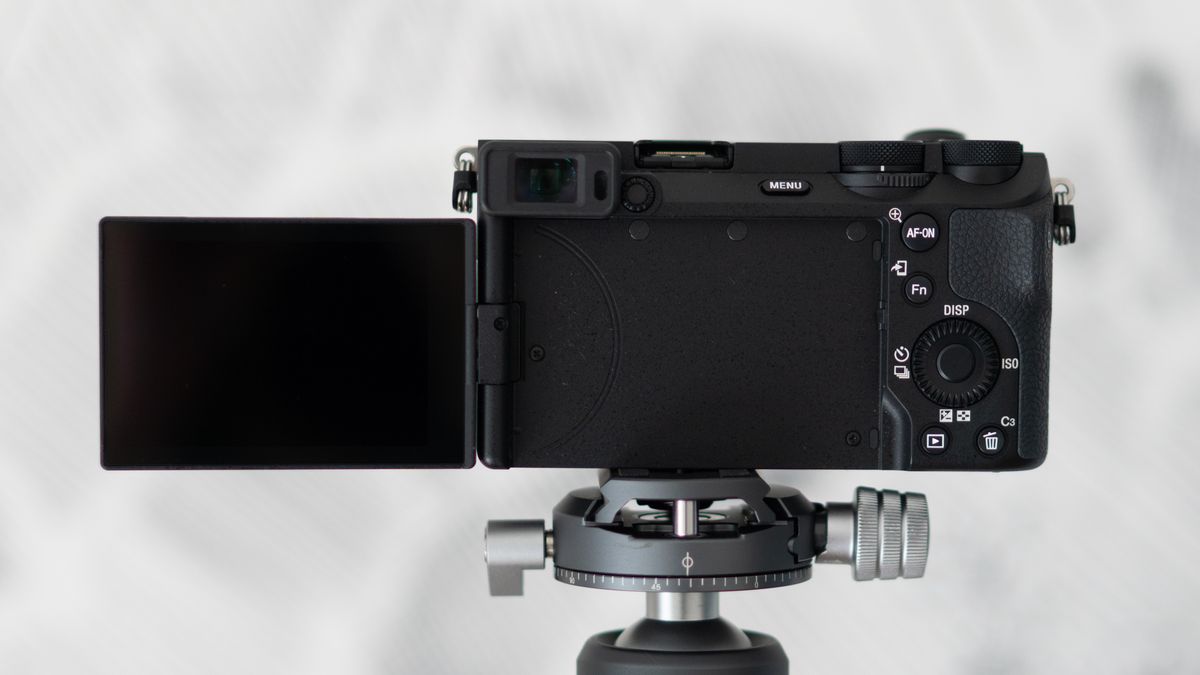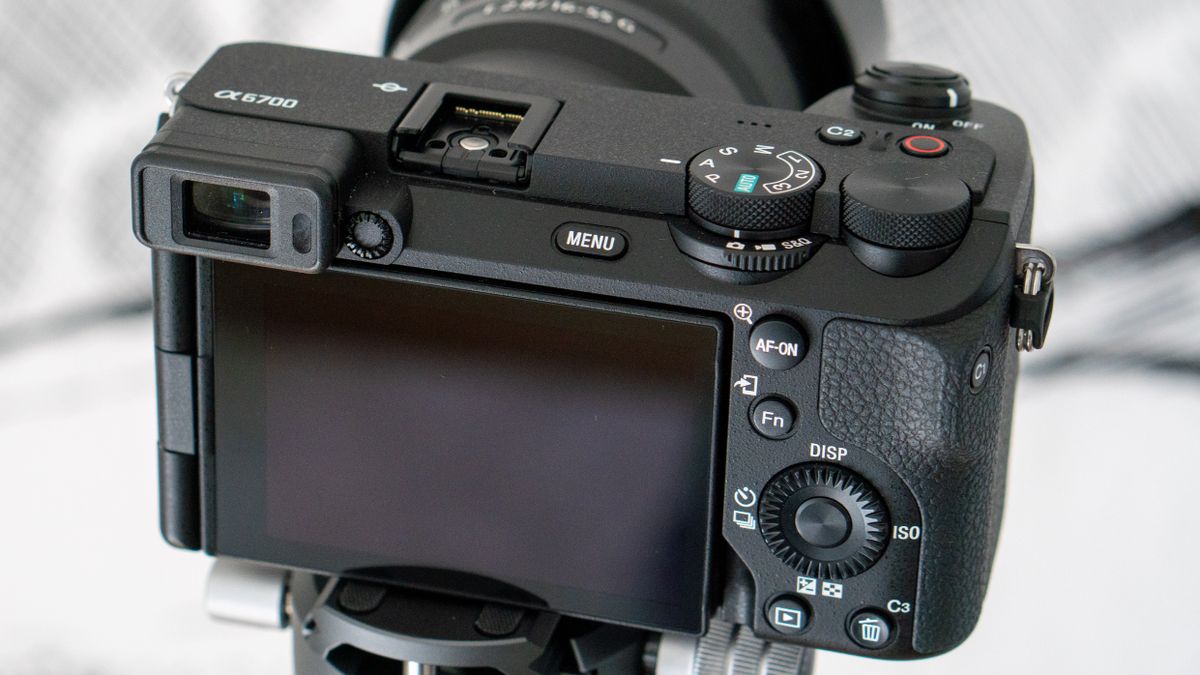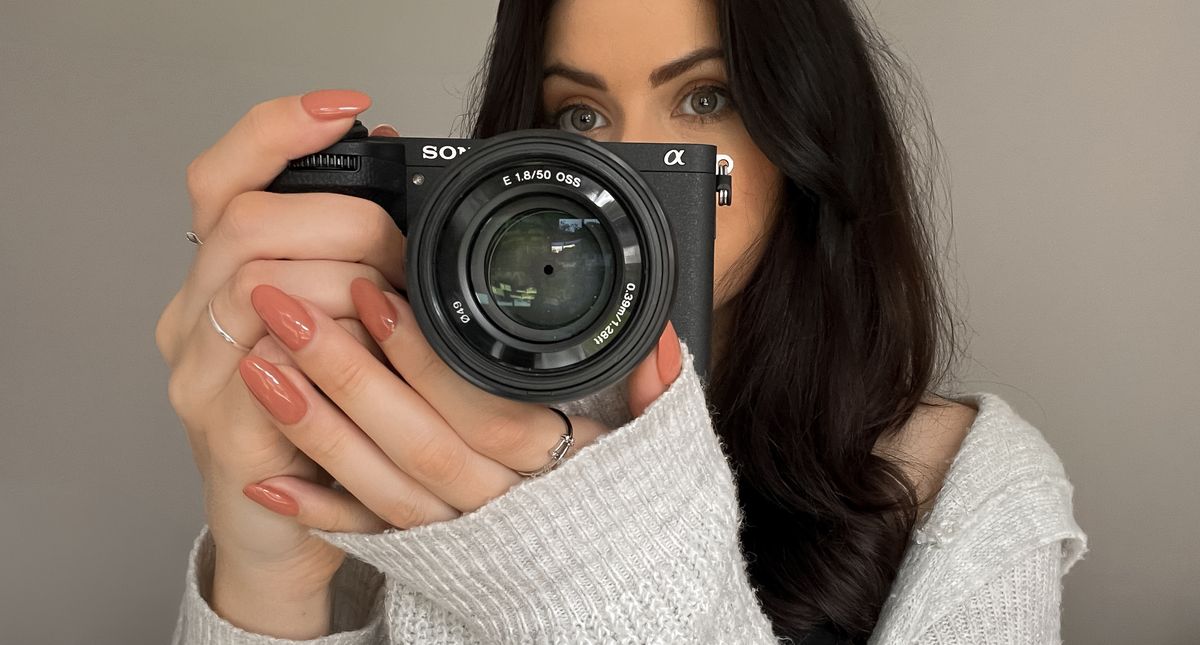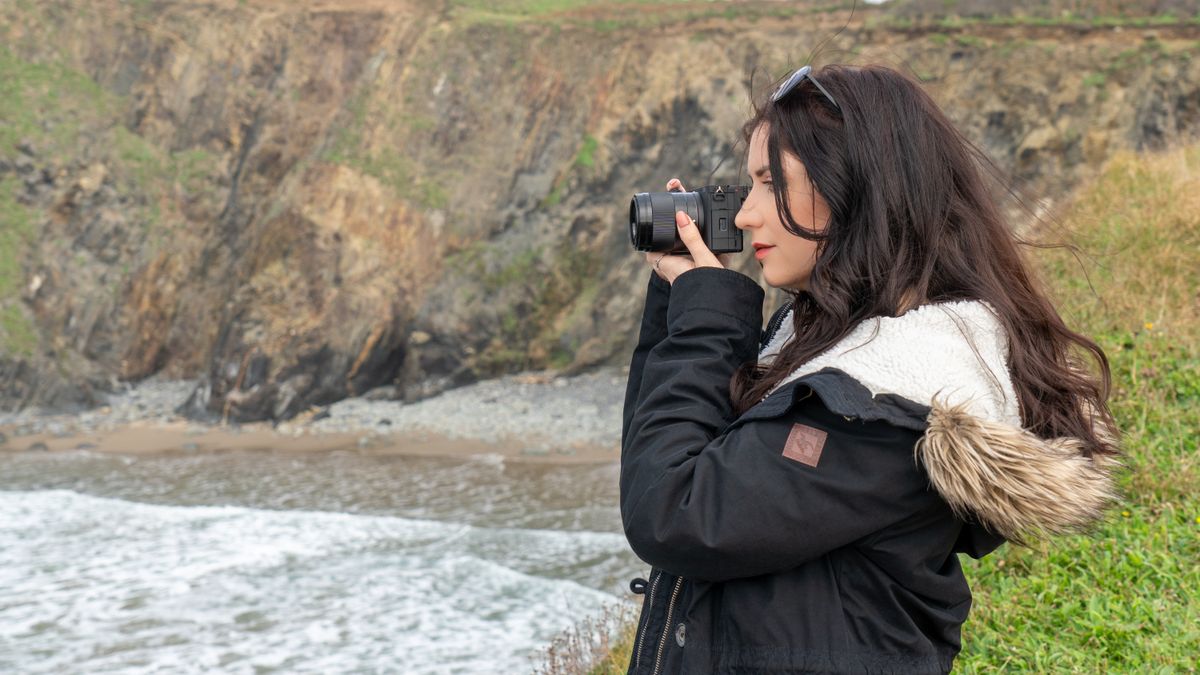After testing some of the best Sony cameras available on the market, we’ve compiled this guide of all our favorite models, from budget-friendly beginner options to powerhouses for professionals. Each photographer has a different set of needs, and cameras aren’t one-size-fits-all, so we’ve compiled this list of the best Sony models to suit every photographer.
Sony is a massive name in the photography industry, and they’ve made some of the best cameras you can buy. Since 1988, Sony has been manufacturing cameras, and their first digital camera was released in 1996. More recently, they’ve been continuously hitting it out of the park with their ridiculously detailed sensors and industry-leading autofocus technology. They are constantly raising the bar they set for themselves, and we think their cameras and lenses are some of the best on the market right now.
When choosing the best Sony camera for you, consider your specific requirements. Are you a beginner, or do you have a lot of experience? What’s your budget? Do you primarily shoot photos or videos? Do you shoot in any particular style, like sports, astrophotography, or landscapes? It’s crucial to find the camera that is best suited to your needs, and we’ve got you covered with this guide.
For astrophotography enthusiasts, Sony has some of the best cameras for astrophotography and low light photography, plus they also offer some of the best lenses for astrophotography.
The quick list
Here’s a quick overview of the cameras we’ve included in this guide. To read more about a certain camera, just click the ‘read more’ link and you’ll be taken further down the page to a more in-depth look.
Best overall
The Sony A7R V is the camera to beat right now for most general styles of photography. It has incredibly clever AI autofocus that never misses, produces stunning images and is a dream to use. We love it.
Best for astro
For dedicated astro work, the Sony A7R IV is an absolute beast. It has the highest resolution of any mirrorless camera, and we were really impressed with the quality of the images.
Best for professionals
For professionals with a big budget, the Sony A1 is the camera to beat. It’s incredible in every aspect and even though some newer models have new and improved tech, the A1 still stands superior. The only real drawback is the exceptionally high cost.
Best entry-level full-frame
For those looking for a good way to get into the full-frame system, the Sony A7C II is a fantastic option. It doesn’t excel in any particular area, but we think it’s an excellent camera all-round.
Best crop-sensor
The Sony A6700 is an incredibly capable APS-C camera, we thought it felt like a full-frame camera in a crop sensor body, with the latest AI-powered autofocus, a travel-friendly design and image stabilization in stills and video.
Load the next 3 products ↴
Best for speed
Capable of an insane 120FPS, this camera is an absolute beast for sport and wildlife photography. But the global shutter comes at the cost of reduced image quality, so it’s not best suited for more general photographic styles.
Best for vlogging
Focused on vlogging and video, this camera produces stunning 4K video footage that vloggers and content creators will love.
The best Sony cameras we recommend in 2024
Best overall
Buy it if
✅ You want high-resolution images: 61MP enough for you?
✅ You shoot people or animals: The AI-powered autofocus is incredibly accurate when a human or animal face is in the frame, making sure you never miss a shot.
✅ You shoot a lot of video: It can shoot 8K/25p video.
Don’t buy it if:
❌ You shoot fast-paced action: The processing speed has improved, but the burst rate is capped at 10FPS.
❌ Your computer can’t handle the large files: 61MP images are not small, so your computer will need to be able to keep up with that.
The bottom line:
? Sony A7R V: It builds on the power of its predecessor with its higher resolution EVF and LCD screen, more stops of image stabilization and a new AI autofocus unit — we absolutely love it. ★★★★½
If you’re looking for the best Sony camera overall, for our money, it’s the Sony A7R V. It produces stunningly detailed images, can do pretty much anything you throw at it and was an absolute dream to shoot with.
It has probably the most functional screen we’ve ever seen in a camera. Not only is it more detailed than its predecessor, but you can either use it as a tilt-out screen or a fully articulating one (or both!). We loved its versatility and it really made any style of shooting much easier knowing we didn’t have to contort ourselves into uncomfortable positions (which was a complaint we had with the tilt-only screens on the A7R IV and A1).
It shares the same 61MP back-illuminated Exmor R CMOS as its predecessor, but the new BIONZ XR image processor provides up to 8x the processing speed of the previous model, which has helped the buffer speed enormously. The burst rate is capped at 10FPS so probably not fast enough for sports or fast-action photography, but it’s certainly enough for most other shooting situations.
Another aspect we were very impressed with during our full Sony A7R V review is the AI-powered autofocus that Sony have been introducing into their newer models. It has Real-Time Recognition which can predict how a subject might move and can detect and track various body parts, making portrait shooting easier than ever. It’s also incredibly capable at shooting animals and various types of vehicles.
We did think the astro images we took were a little noisy, but that’s to be expected with a 61MP sensor. Still, when we used Lightroom’s AI de-noise feature it cleaned up the image beautifully. We think it would be great for the occasional bit of astro, but if you’re going to be doing it regularly and stacking multiple images, it might get a little time-consuming.
But for other types of low-light photography, the 8 stops of image stabilization make this camera shine. We took it into a city at nighttime and were able to shoot handheld at ISO 100 at 1/3 of a second to get some light trails from cars and the results were pin-sharp.
Overall we absolutely adore this camera and wouldn’t hesitate to recommend it to anyone. We tested it out with the Sony FE 24-70mm f/2.8 GM II lens and thought it was an incredible setup.
| Attributes | Notes |
|---|---|
| Design | Incredibly functional and intuitive screen. |
| Performance | Practically flawless AI-based autofocus. |
| Functionality | Eight stops of image stabilization. |
Best for astrophotography
Buy it if
✅ You want lots of detail: The 61MP sensor produces stunningly detailed images with lots of detail.
✅ You’re a professional: This camera would suit a pro perfectly — it’s user-friendly and produces beautiful images.
Don’t buy it if:
❌ You want a fully articulating screen: The screen on the Sony A7R IV is tilt-only.
❌ You shoot fast-paced action: We noticed a fair amount of buffer lag when we reviewed it, so it wouldn’t be ideal for shooting fast-paced sports.
The bottom line
? Sony A7R IV: Despite the big price tag, this is an incredible camera in a class of its own. For landscape photographers, studio portraits or professional wedding photography, the Sony A7R IV is an incredible option. ★★★★½
When the Sony A7R IV was released back in 2019, it had the highest resolution sensor of any mirrorless camera on the market. Its younger sibling, the A7R V, has since matched that, but the A7R IV was a total breath of fresh air at the time of its release. Its massive 61MP sensor produces breathtaking images that both pros and beginners will love, and even though it doesn’t have some of the newer features of the Sony A7R V, it’s still a fantastic camera five years on.
During our full Sony A7R IV review, we found the camera easy to handle and it wasn’t too heavy to hold for longer periods. We noticed that Sony seems to have addressed some of the gripes from the previous model, including bigger and better buttons, which is particularly advantageous for astrophotographers who either can’t see what buttons they’re pressing or are wearing gloves while out on a shoot.
We did run into some minor issues while shooting, namely the buffer lag while using burst mode. The Sony A7R IV can shoot up to 10fps, which is impressive considering the images are a whopping 61MP each, but it does tend to put pressure on the processor and memory card, particularly if you’re not shooting with a fast card. If you’re shooting astrophotography though, it’s unlikely you’ll ever run into this issue.
As expected, the autofocus is impressive and has real-time tracking for eyes and faces which follows the subject effortlessly throughout the frame. We were also very pleased with the battery life — we took over 2000 images in a 2-hour portrait shoot and at the end of it the battery had only gone down to 65%. While other features in the newer Sony A7R V would, in theory, make that camera better overall, the battery life drains a lot faster in the A7R V than it does in the A7R IV thanks to the newer model having AI-based autofocus. As astrophotographers don’t need the newest and best autofocus but do need a longer battery life, we still think the Sony A7R IV will be the better option for astrophotography.
| Attributes | Notes |
|---|---|
| Design | Very well built, but we’d like a fully articulating screen. |
| Performance | Impressive image quality, but very big files. |
| Functionality | Buffer can struggle when shooting in burst mode. |
Best for professionals
Buy it if
✅ You’re a serious professional: Due to the price and caliber of its features, this camera is best suited for pros who make money from photography.
✅ You shoot a lot of video: This camera can shoot 8K video, making it a tempting option for serious videographers.
Don’t buy it if:
❌ You don’t have a very large budget: At around $6000 just for the body, this isn’t the camera to go for unless you have a very big budget to spend on it.
❌ You’re a beginner: Not only is it far too expensive for most beginners, but the features and capabilities will be overkill if you’re just starting out with photography.
The bottom line
? Sony A1: This camera can do everything, but it’s only really accessible to full-time professional photographers or amateurs with very deep pockets. ★★★★½
For Sony shooters looking for the most professional camera money can buy, look no further than the Sony A1.
When it comes to intuitive shooting, this camera is hard to beat with the number of buttons and dials on the body itself. It may seem overwhelming at first, but once you’re used to the layout and have customized everything according to your setup, it means you can easily change your settings on the go without having to dive into the confusing Sony menu system. That said, Sony have been consistently improving their menus to make them easier to navigate, and we found the menus on the A1 to be a lot less confusing than previous menus.
We were impressed with the dynamic range when we reviewed the Sony A1, and we thought it was Sony’s best camera when it came to replicating accurate colors. It can shoot up to 30FPS and we were satisfied with the buffer-clearing speed, making it a suitable camera for shooting sports and fast-paced action. We also thought its autofocus and tracking were practically flawless every time.
The Sony A1 is also a very tempting option if you shoot a lot of video. Its 8K video capabilities are a huge selling point, although there have been reports of it overheating after about 90 minutes of recording, which is something worth considering if you plan on shooting for longer periods. Though our one slight niggle is the lack of articulating screen, making it harder to shoot vlogs while seeing yourself on the screen. For such an expensive camera, we really don’t know why Sony didn’t include one.
But when it comes to image quality, you really cannot complain about this camera. It produces beautiful 50.1MP images with fantastic color and stunning detail even in the darkest shadows. It will suit quite literally any style of photography — the only reason we haven’t named it best overall is its higher price point than Sony’s other models.
| Attributes | Notes |
|---|---|
| Design | Tilt only screen is disappointing considering the price. |
| Performance | Fantastic colors, good noise handling and impressive dynamic range. |
| Functionality | Can handle pretty much anything you throw at it. |
Best entry-level full-frame
Buy it if
✅ It’s your first full-frame camera: If you’re making the jump to full-frame or are a beginner, this is a fantastic camera to start with.
✅ You don’t have a huge budget: Considering its specs, capabilities and the fact that it’s a full-frame camera, it’s very reasonably priced for what it is.
✅ You’re a vlogger: It’s lightweight, easy to carry and has a fully-articulating screen, making it a great option for vlogging.
Don’t buy it if:
❌ You want to grow with it: It’s great to start with, but it doesn’t excel in any particular area so you’d likely outgrow it after a while.
❌ You’re a professional: It’s more of a beginner or enthusiast camera — there are bigger and better options on this list for pros.
The bottom line
? Sony A7C II: A neat little full-frame camera that will perfectly suit enthusiasts who shoot multiple photographic styles. It’s not the most impressive camera we’ve ever seen, but we were pleasantly surprised. ★★★★
In all honesty, we were expecting to be completely underwhelmed by the Sony A7C II. After reviewing Sony’s big hitters like the A1 and A7R V, we expected to laugh the Sony A7C II out of the room. However, we were very pleasantly surprised with just how well it performs and the quality of the images it produces.
It’s aimed at casual photographers and globetrotters who want something small and lightweight but still delivers quality, and we think it certainly lives up to those claims. Its weight of just 1.13 lbs (514g) and fully articulating screen make it a dream for travel photographers and vloggers who want to be able to document their travels while saving on weight and space. There were a few more design improvements that we mentioned in our full Sony A7C II review that we liked, and overall it was a pleasure to shoot with.
We thought the images were very impressive for such an affordable camera — the 33MP sensor sits nicely between the massive 61MP of Sony’s R range and the 24MP of the original A7C. We thought the color, detail and dynamic range were all excellent and it doesn’t produce massive files that the camera struggles to keep up with.
It has Sony’s new deep-learning AI-powered autofocus which we thought was incredible, and a fantastic feature to have on such a well-priced camera. We wouldn’t necessarily recommend it for dedicated astro-shooters, as we found the images to be fairly noisy above ISO 5000. It would be sufficient for the occasional astro work, though. To get the best out of this camera, you’ll need to take it to a dark sky site.
As you’d expect, there are some sacrifices made in order to keep the price down. There’s only a single card slot, and it doesn’t work with faster cards — but that shouldn’t be a huge issue for beginners or casual shooters. The LCD screen has also not received much of an upgrade from its predecessor in terms of resolution or size, but it is now fully articulating.
Overall it’s not anything wildly exciting or new — it’s just…fine. However, if you’re looking for something small and lightweight that doesn’t have all the bells and whistles but still produces great images at an affordable price, we think you’ll get on very well with it.
| Attributes | Notes |
|---|---|
| Design | Small and lightweight form factor makes it excellent for travel. |
| Performance | Produces surprisingly impressive images. |
| Functionality | Includes Sony’s new AI-based autofocus. |
Best crop sensor
Buy it if
✅ You want to travel with it: It’s lightweight and small, making it ideal for travel.
✅ You’re not bothered about having full-frame: It has a lot of the features found in their newer full-frame cameras, so if you’re not bothered about the sensor size, it’s a great way to save a bit of money.
✅ You’re a beginner: Its price and capabilities will suit beginners down to the ground.
Don’t buy it if:
❌ You want a good lens lineup: There are some pretty good lenses suitable for APS-C cameras, but if you want pro-level you’ll have to upgrade to full-frame.
❌ You want a fast burst rate: 11FPS is fine for most situations, but for fast-paced action like sports, you’ll need more.
The bottom line
? Sony A6700: Packed with advanced features and cutting-edge technology, we think it’s sure to impress both amateur and professional photographers alike. It’s the closest thing to a full-frame camera in a crop sensor body. ★★★★
While most of the best Sony cameras on this list are indeed full-frame, that’s not to say there aren’t any good crop sensor options out there. If you’re looking for the best crop sensor Sony, we’d recommend the Sony A6700. It’s the newest model in their APS-C lineup and comes packed with many of the features you’ll find in some of our favorite full-frame models — all wrapped up in a small and lightweight package.
We noted in our full Sony A6700 review that it’s the first of Sony’s APS-C lineup to have a fully articulating screen, which is a small feature many photographers look for in a camera to enable vlogging and shooting at unusual angles. It feels great in the hand and we thought it was just right — not too big and not too small. Sony have also added a front dial, meaning you can adjust the aperture, shutter speed and ISO independently on the body without having to go into the menus, which is incredibly convenient and makes shooting with this camera very intuitive.
It has impressive low-light performance, and for astro, the images only started to look ugly after ISO 6400. The AI autofocus is insanely impressive for any camera, let alone a crop sensor, and it tracked animals and humans flawlessly even when they weren’t facing the camera. It did struggle when we introduced a subject that wasn’t recognized in their autofocus menu — we shot a triathlon and the camera didn’t like it when we tried to shoot the bike portion.
The Sony A6700 also has notable improvements in its video specs. A significant step up from the A6600, it can record 4K video at up to 60p with a small 1.04x sensor crop, and there’s also an option for 4K recording at 120p, but it comes with a larger 1.58x sensor crop which changes the field of view noticeably. It also now has image stabilization when shooting video.
Overall, we think it’s a fantastic option for beginners with a bigger budget and amateurs who don’t want to pay out for full-frame. It’s an incredibly capable camera, especially for the price. We really liked it.
| Attributes | Notes |
|---|---|
| Design | Fully articulating screen, but only has one card slot. |
| Performance | AI-based autofocus, excellent low light performance. |
| Functionality | Battery life compromised due to the power hungry AI autofocus. |
Best budget full-frame
Buy it if
✅ You don’t want the latest tech: This 6-year-old camera doesn’t have Sony’s latest features and technology.
✅ You need an affordable second camera: If you’re a professional and want a good second camera that won’t break the bank, this is a great option.
Don’t buy it if:
❌ You want high resolution: The 24MP sensor still produces some beautiful shots, but it may be a little low for some users.
❌ You’re a serious professional: This isn’t to say this camera can’t be used in a professional capacity, but we think there are better options out there that make shooting easier and more intuitive.
The bottom line:
? Sony A7 III: While the Sony A7 III gives advanced enthusiasts and even professionals a lot of camera for their money, it does have a few annoying handling niggles and its starting to show its age. ★★★★
6 years after its release, the Sony A7III is still a well-loved camera today by beginners and experienced photographers alike. It is showing its age due to all the technological advancements over the recent years, but it’s still a fantastic camera and a great price compared to when it was first released.
The 24MP sensor may seem a little low compared to many of Sony’s newer models, but the images it produces are sharp, detailed and have accurate colors — the only real reason 24MP wouldn’t be enough is if you’re going to make large prints. The lower resolution also means it’s a very worthwhile option for low light and astro work. In our full Sony A7III review, we found that it could practically see in the dark, and the lower megapixel count means reduced noise in your images, too.
We had a few other niggles when we tested it, like some missing dials and unfriendly menu systems, but overall we thought it was a fantastic camera and were really impressed with the shots we got and its handling. It’s lightweight, weather-sealed and has two card slots, so would make a neat little second camera for photographers shooting events or weddings. It’s not the best option for wildlife or sports due to its 10FPS burst rate, but for most other photographic styles, we think it’s ideal.
While it was a breath of fresh air and very much ‘the camera to beat’ when it was first released, it is really starting to show its age. When we reviewed it, we thought the autofocus was excellent, but newer models now feature an AI-based autofocus with deep-learning, which will be a much more compelling option for portrait shooters. If you want some of the newer features but don’t have the budget for the heavy hitters, we’d recommend the Sony A7C II which we’ve already mentioned in this list — it’s a few hundred dollars more but it has all the newer tech.
But overall, it’s a dependable camera that will see you through almost any shoot. It has great battery life, accurate tracking and autofocus and 4K video recording. For $1800, we think it’s a great buy.
| Attributes | Notes |
|---|---|
| Design | Compact and lightweight for travel. |
| Performance | Excellent in low light, 24MP sensor means lower noise. |
| Functionality | Reliable tracking, but this is improved further in newer models. |
Best for speed
Buy it if
✅ You shoot sports or wildlife: The silent shutter and insane 120FPS burst speed are designed for shooting fast-paced action.
✅ You don’t need mega high-quality images: The trade-off of the global shutter is reduced image quality, so if speed is more important to you, this camera is worth it.
✅ You’re a professional: Unless you’re a beginner with more money than sense, the $6000 price tag means this camera is likely only reserved for the pros.
Don’t buy it if:
❌ You want to shoot in low light: It has a higher minimum ISO than many others and isn’t designed for low-light shooting.
❌ You’re a beginner or don’t have a very big budget: It’s overkill in every way for beginners and is also very expensive.
❌ You shoot more general styles of photography: Its features and specs are geared towards fast action sports and wildlife, so it’s not best suited to more general photography.
The bottom line
? Sony A9 III: Shooting at 120FPS is a feature that not many photographers will actually need, but it will ensure you never miss a shot. It’s ideal for sport photographers, but the global shutter means reduced image quality. ★★★★
You may have heard Sony boasting about the ‘world’s first global shutter camera’ with the release of the Sony A9 III late last year — but what does that mean exactly?
It means that you get zero rolling shutter distortion for both stills and video by reading the entire sensor at once. By removing the need for a mechanical shutter, it boosts the speed and enables the camera to shoot up to an insane 120FPS. If you’re thinking ‘what’s the catch?’ the catch is that this speed comes at the price of reduced image quality compared to other mirrorless cameras.
The buffer holds 200 RAW frames, which fills up in less than two seconds and takes a while to clear, even with faster cards. It’s great to have the capability to do that, but unless you particularly enjoy trudging through thousands of frames later on, realistically, 120FPS is likely going to be overkill 99% of the time. Plus, the 120FPS is only achievable with supported Sony lenses — for third-party lenses this is capped at 15FPS. Thankfully, there’s the option to dial the burst rate down to 60FPS or 30FPS.
As expected with Sony’s newer models, the AI autofocus is impeccable and rarely misses. This, coupled with the fast burst speeds, makes this a top choice for sports, wildlife and weddings…if you can afford it. And as shooting can be totally silent, it’s an attractive camera for shooting subjects like golfers or wildlife where you need to be quiet to avoid disturbing them.
It has all the other usual suspects you’d expect with a premium Sony camera, too — up to 8 stops of image stabilization, weather sealing, dual card slots, 4K video, the best EVF of any Sony camera to date — the list goes on.
But due to the reduced light intake of the sensor, there’s more noise and less dynamic range in the images, so for the styles of photography where detail and image quality are more important than speed (landscapes, portraits, astrophotography to name a few) this camera isn’t the best choice. For more general styles of photography, go for the A1 or A7R V.
That said, with what we know about the caliber of Sony’s cameras and their image quality, we’re confident they wouldn’t release a camera if the image quality was compromised to a noticeably lower standard than we are used to from them. We’re looking forward to reviewing this camera to see how it stands up against their other models.
| Attributes | Notes |
|---|---|
| Design | Lightweight and good grip. |
| Performance | Reduced image quality due to the global shutter. |
| Functionality | Capable of shooting up to an insane 120FPS |
Best for vlogging
Buy it if
✅ You focus on vlogging: This camera is aimed towards vloggers and content creators rather than photography.
✅ You want to travel with it: It’s small and lightweight, plus incredibly easy to use for solo travel.
Don’t buy it if:
❌ You focus more on photography: There’s no EVF and the 12MP sensor produces ok images, but it’s not a camera for photographers.
❌ You’re heavy into video: It certainly holds its own, but if you’re a heavy user and want something robust with unlimited recording, check out the Sony FX3.
The bottom line
? Sony ZV-E1 Small, lightweight and simple, this little vlogging camera perfectly combines a user-friendly setup with fantastic quality footage. A must for vloggers and content creators. ★★★★
Vloggers and content creators often have different needs to photographers, so many of the photography-oriented cameras on the market (and indeed on this list) are usually not the best match for vloggers. But we think the Sony ZV-E1 is the ideal camera for content creators and anyone wanting a small, lightweight camera to record vlogs quickly and efficiently.
It provides one of the most affordable ways to shoot in 4K with a full-frame camera, and the fully articulating screen makes taking selfies and recording yourself a breeze. There’s a recording limit of around 95 minutes, which should be plenty for most casual shooters. It can capture pretty modest 12MP stills, but they’re fine if you’re only viewing them on a small smartphone screen (which most people do nowadays).
A major selling point of this camera is Sony’s clever AI autofocus, which we’ve been seeing in many of their newer models. This feature in a vlogging camera makes it easier than ever to turn the camera on and get going straight away, with the camera automatically finding and tracking subjects in the frame without you having to tell it what to do.
The Sony ZV-E1 is aimed more at casual vloggers and content creators than heavy video users and professional videographers. It’s a competent camera, but other models on the market are more suited to heavy use like the Sony FX3, which has dual card slots, an unlimited recording limit and can record RAW video.
| Attributes | Notes |
|---|---|
| Design | Small, simple and lightweight. |
| Performance | Excellent quality 4K video. |
| Functionality | AI autofocus keeps subjects in focus. |
Best for beginners
Buy it if
✅ You’re on a budget: We think this model in the APS-C range has a good balance of quality and affordability. There are ‘better’ models but they’re much more expensive.
✅ You don’t need all the latest tech: If you want to get to grips with the basics and don’t need all the fancy features of the newer models, this is a good option.
Don’t buy it if:
❌ You want a camera you can grow with: If you want photography to be a long-term hobby or possibly even a career, you’ll outgrow this camera quicker than if you invest in one of the more expensive beginner models.
❌ You want image stabilization: This camera doesn’t have it, and neither do many of the APS-C lenses.
The bottom line
? Sony A6700 Although this camera isn’t the newest model, it still produces great results and is user-friendly enough for beginners to use. We think it’s a good price point for anyone new to the hobby. ★★★½
The best beginner cameras must strike a good balance between having user-friendly features that won’t overwhelm beginners, producing good-quality images and sitting at an affordable price point that beginners can afford. We think the Sony A6700 fits the bill in all those categories.
It’s the newest model in the A6000 line-up and benefits from the latest Sony tech, including 4K UHD 30fps video, 26 MP stills and five stops of image stabilization. It’s also small, lightweight, and produces some beautiful shots that beginners will be impressed with. The 26 MP sensor is more than enough for beginners and will look great on a small smartphone screen; plus, you can easily print images of this resolution to hang on your walls (you’d only struggle if you wanted to make very large, high DPI prints).
Our gripe with previous versions of Sony A6000 cameras was that the autofocus was always a trade-off. However, with the advent of AI-based autofocus we’ve found the camera tracks and maintains focus on subjects better than previous models. A significant improvement. It also has five stops of in-body image stabilization to keep video steady and allows for longer exposures of subjects when handholding.
It can record decent 4K UHD video at 30fps, and comes with a fully articulating LCD screen if you want to record vlogs or take selfies. The battery life is decent but it could be better at just 550 shots when using the electronic viewfinder or 570 shots when shooting on the LCD monitor. This is down from 720 shots (EVF) or 810 shots (LCD monitor) but we think the improvements in features outweigh this for many users, except for professionals.
As you get used to the camera and your skills grow, you’ll likely become frustrated with the lack of on-body dials and controls. Still, overall, we think it’s a fantastic little camera for beginners to hone their photography skills before they upgrade to a better model.
| Attributes | Notes |
|---|---|
| Design | Small and lightweight. |
| Performance | Solid peformance to satisfy beginners. |
| Functionality | 5 stops image stabilization. |
Sony cameras FAQs
Which Sony camera is the best?
It largely depends on your experience level, your budget and what type of photography you do. Each Sony camera has varying specs that are suited to different things, so we hope this guide will help you figure out which Sony camera is the best for you.
Do Sony cameras have image stabilization?
Many of them do, yes. Some of the older models don’t, but most, if not all of the newer models do have in-body image stabilization.
Why choose Sony over the other brands?
Ultimately it all comes down to personal preference. All manufacturers have cameras that produce beautiful results, so it depends on which systems you like using, what features and specs are important to you, and which cameras you get along best with and make you want to pick up your camera and go out shooting with it.
That said, Sony do have industry-leading autofocus, and they also sell the world’s first global shutter camera (therefore, the fastest) and the highest resolution camera on the market.
How we test
How we test the best Sony cameras
To guarantee you’re getting honest, up-to-date recommendations on the best Sony cameras to buy here at Space.com we make sure to put every camera through a rigorous review to fully test each product. Each camera is reviewed based on a multitude of aspects, from its construction and design, to how well it functions as an optical instrument and its performance in the field.
Each camera is carefully tested by either our expert staff or knowledgeable freelance contributors who know their subject areas in depth. This ensures fair reviewing is backed by personal, hands-on experience with each camera and is judged based on its price point, class and destined use.
We look at how easy each camera is to operate, whether it contains the latest up-to-date imaging technology, whether the cameras can shoot high-quality stills photos and high-resolution video and also make suggestions if a particular camera would benefit from any additional kit to give you the best viewing experience possible.
With complete editorial independence, Space.com are here to ensure you get the best buying advice on Sony cameras, whether you should purchase an instrument or not, making our buying guides and reviews reliable and transparent.


